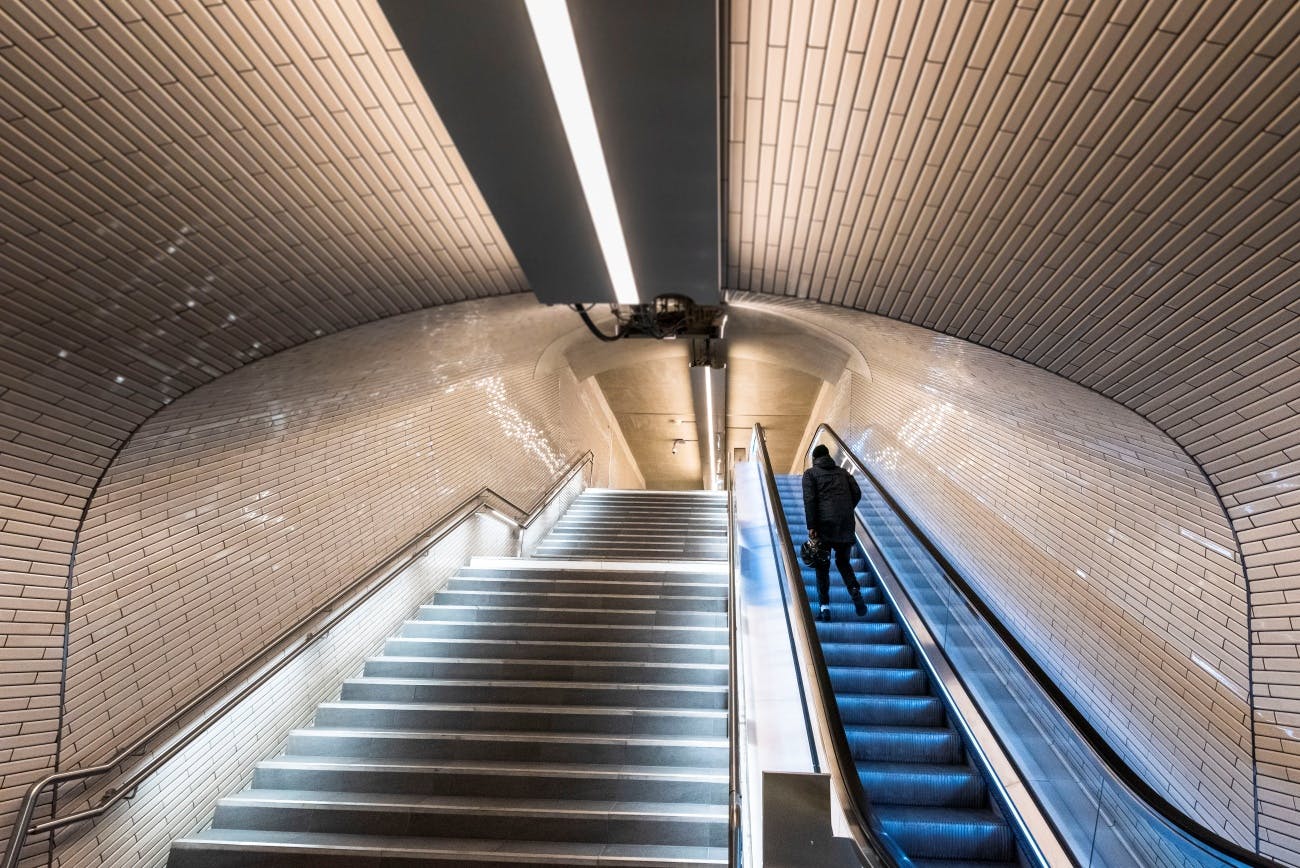Accessibility figures on our network
Published on
Accessibility is a key issue for Île-de-France Mobilités, which works on a daily basis for ever more inclusive public transport. Since 2005, a network transformation policy has been carried out in partnership with associations, operators, local authorities and the Île-de-France Region to improve the comfort of people with disabilities on the lines. Discover, in figures, the progress of accessibility on our network.
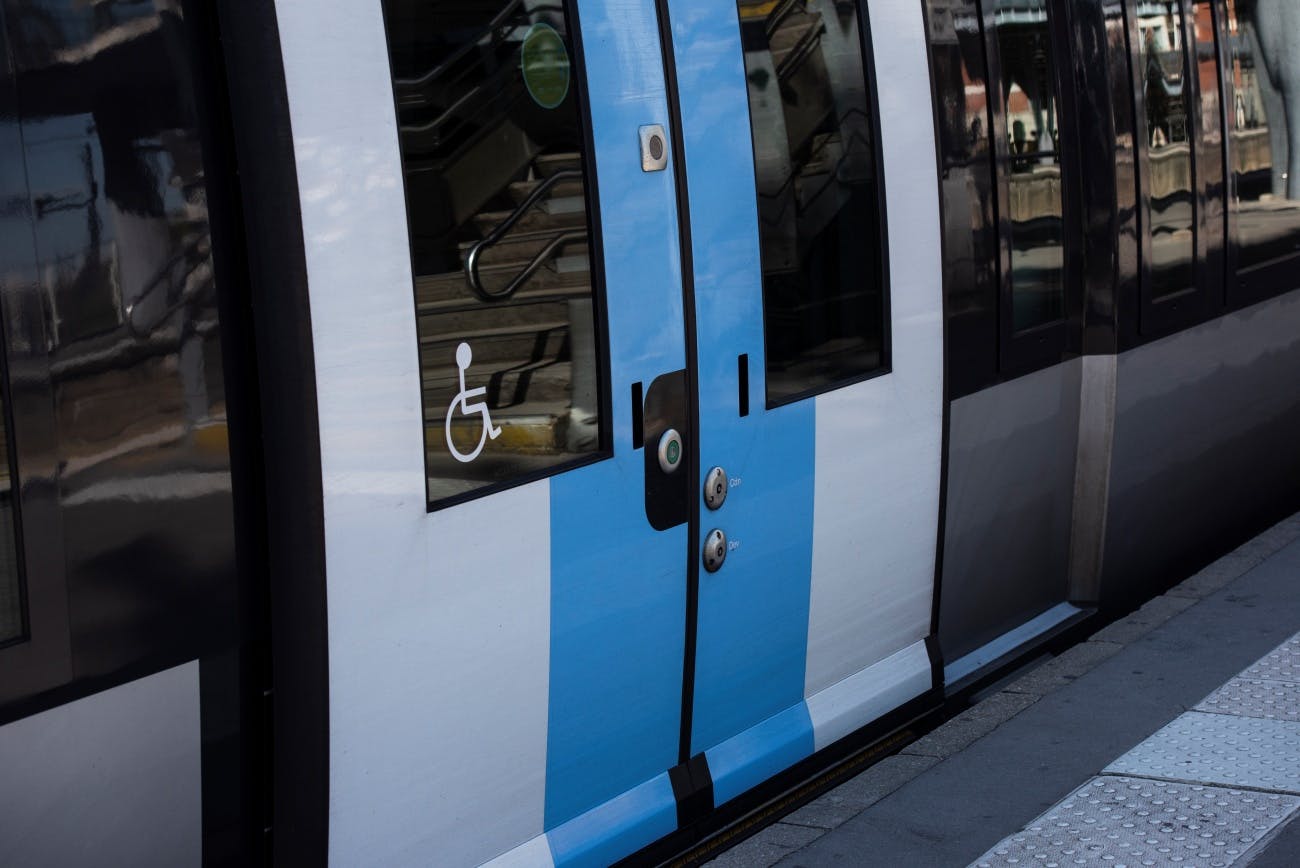
What is Île-de-France Mobilités' strategy in terms of accessibility?
Since 11 February 2005*, French public transport has undergone a real transformation, with the obligation to make its network accessible to all people with disabilities.
Aware of the difficulty that users with disabilities, and in particular people in wheelchairs, may experience in public transport, Île-de-France Mobilités has been carrying out a long-standing policy with user associations, local authorities, the Île-de-France Region and its operators, to make the Ile-de-France network ever more accessible.
*and the law"for equal rights and opportunities, participation and citizenship of people with disabilities"
Île-de-France Mobilités' accessibility requirements
As part of its contracts with operators (companies that are responsible for operating, renovating and modernising the lines on the network), Île-de-France Mobilités imposes requirements in terms of quality of service and information for people with disabilities. These requirements concern:
- support for people with disabilities,
- their access to information,
- the availability of equipment (lifts, stairs, bus access pallets)
- and the time taken to repair any breakdowns.
The Accessibility Master Plan
Île-de-France Mobilités and its partners (the SNCF and the Île-de-France Region) have invested €2 billion to carry out a programme of works to make the network accessible (the Sd'Ap) founded in 2009 and completed in 2015.
This agenda, designed according to the needs and reality of the territory, takes into account the 4 main aspects of accessible mobility with:
- a road component (bus, coach, stops, roads)
- a rail component (train, metro, tram and RER, stations and stations)
- a passenger information component (ticketing, access to adapted information)
- and a staff training component
Discover, in figures, the progress of accessibility on your network!
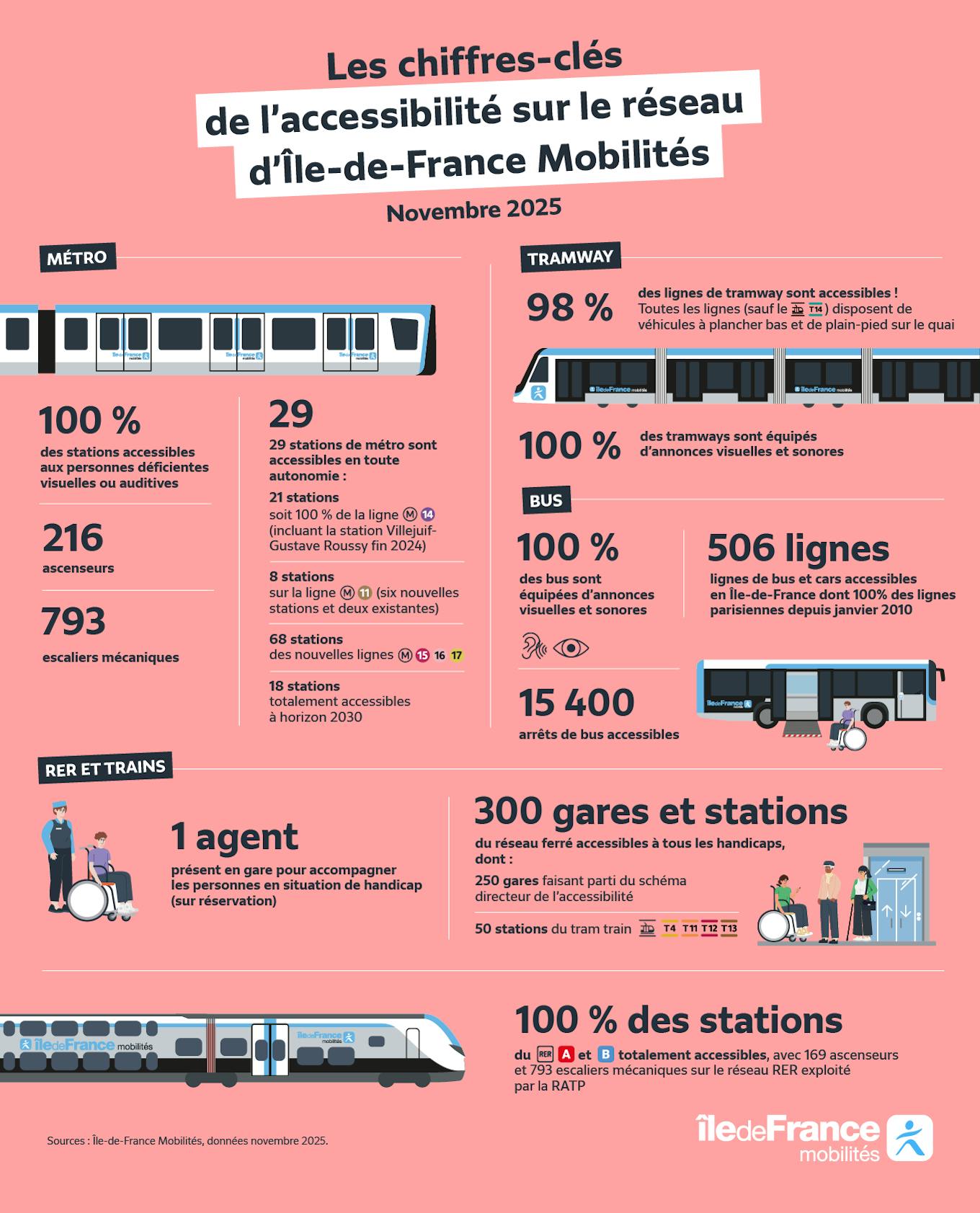
Extensions and new projects: they will all be accessible!
Since 2005 all new projects for the construction of lines, stations, new models of buses, metros or trains and the extension of existing lines are designed to be fully accessible !
Accessibility of bus lines
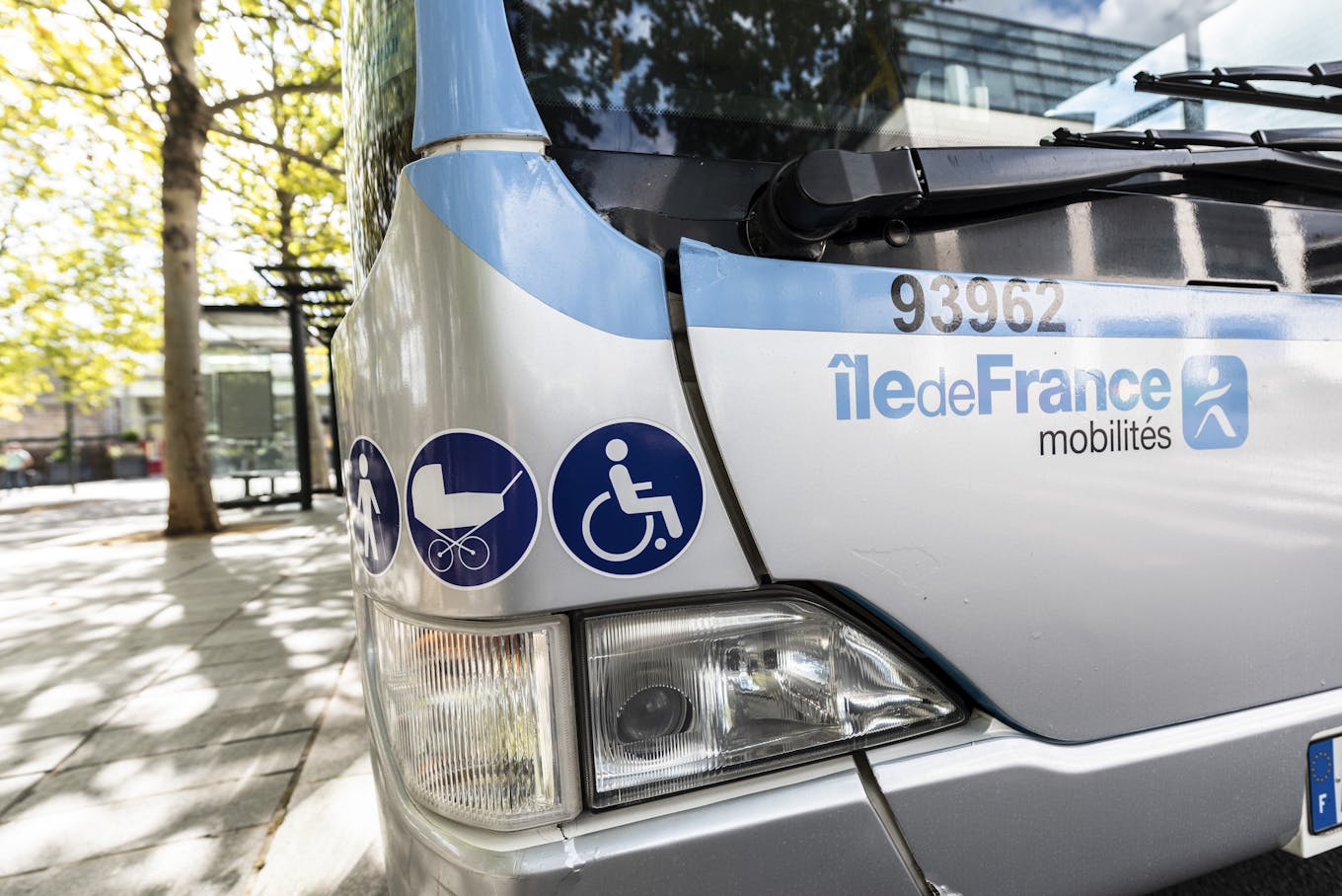
- 100% of Parisian bus lines have been accessible to people with disabilities and reduced mobility since January 2010
- 87% of the inner suburbs' bus network is accessible
- Today, 15,400 bus stops (65%) are accessible out of the 23,600 considered a priority by the Sd'Ap,
- In the outer and inner suburbs, 506 lines are now accessible out of a target of 880 lines,
- The T Zen project lines (1,2,3,4,5 and 6) are and will be fully accessible to wheelchair users in an autonomous manner
- 100% of the bus network is equipped with visual and audible announcements
Why is public transit accessibility built by several hands?
A bus line made accessible makes no sense if the road that leads to its various stops is not accessible. Île-de-France Mobilités works with the various local authorities, the Île-de-France Region and, of course, the line operators to build a complete and fluid travel chain.
Accessibility of metro lines
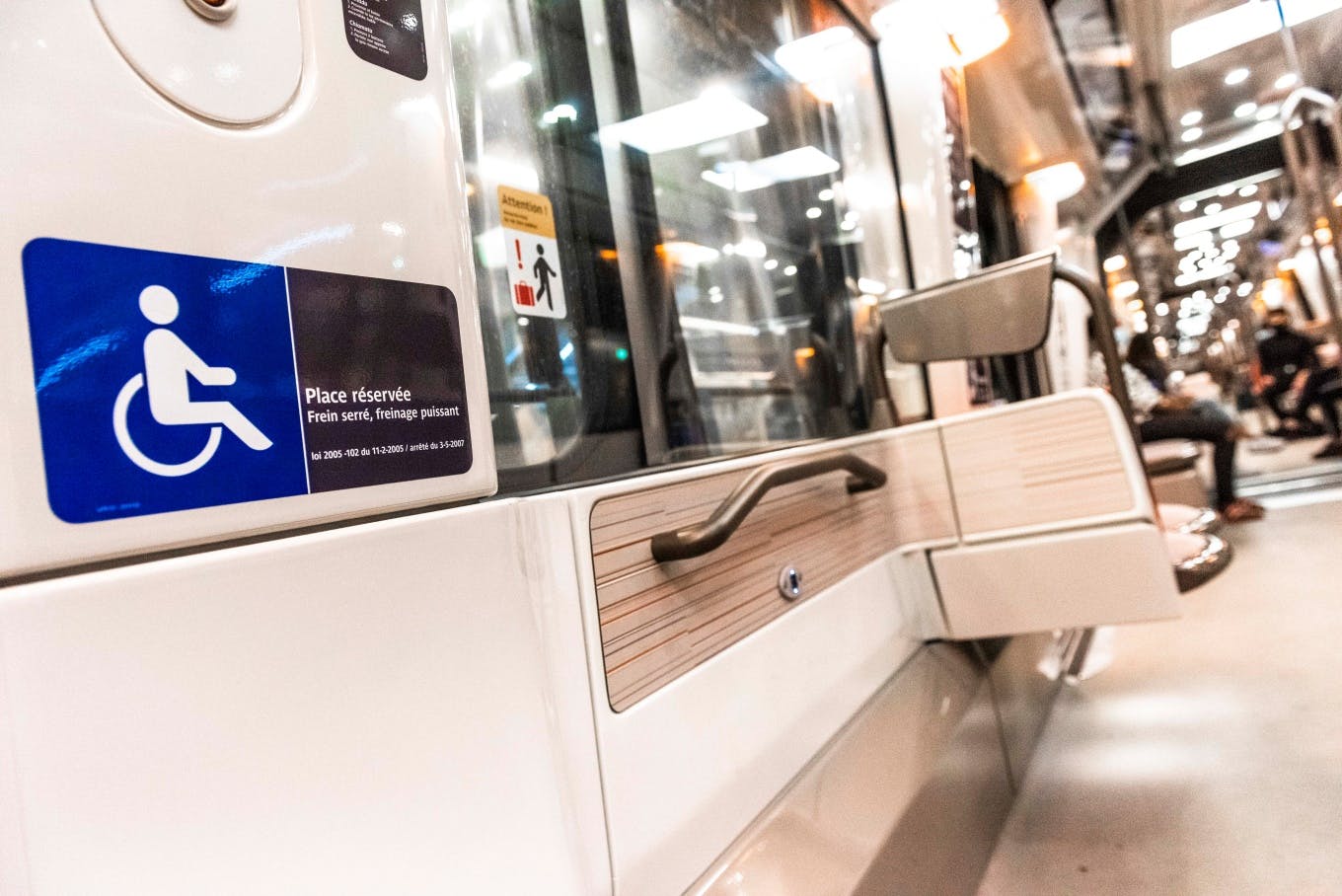
- Line 14 (21 stations) is the only line to date that is 100% fully accessible (from one terminus to another) to all disabilities (including people in wheelchairs),
- 29 100% accessible stations in the Ile-de-France region with the extension of lines 4, 11 and 14
- 68 stations on lines 15, 16, 17 and 18 will be 100% accessible by 2030
- 100% of stations accessible to all disabled people (excluding wheelchair users)
- Trains on lines 1, 2, 3, 4, 5, 6, 9, 11, 13 and 14 are equipped with audible announcements
- The metro lines that are not accessible to people in wheelchairs all have an alternative route by bus, RER or Tramway (routes available from the Me get around page of the Île-de-France Mobilités website).
- The Ile-de-France metro lines are labelled Equisens, S3A and Cap'Handéo for the reception of people with intellectual, psychological, hearing and visual disabilities,
- All the metro line projects designed since 2005 as well as the extension of the existing lines are and will be accessible.
Namely!
100% of agents RATP and SNCF are trained in the operation of accessibility equipment, in the reception and care of people with disabilities!
Accessibility of RER and trains
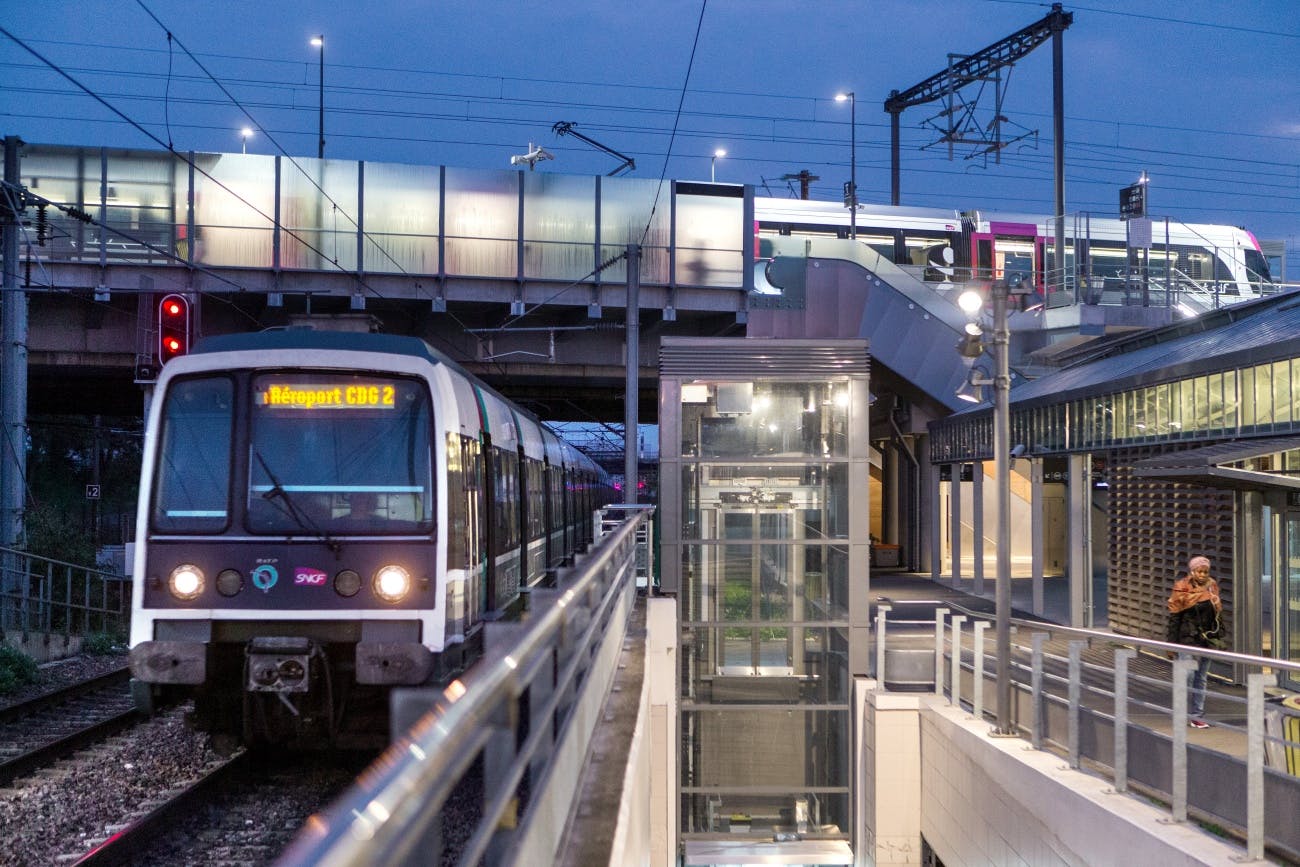
- All RER and train stations are labelled Cap-Handéo for the reception of people with intellectual, psychological, hearing and visual disabilities,
- 99% of the RER is accessible within Paris
- 100% of RER A and B stations are accessible (65 stations in total) with 169 elevators and 344 escalators on the RER network operated by RATP
- 100% of trains and RER trains are equipped with both visual and audible announcements, except for the trains on the RER E line, which to date are 60% equipped
- Trains running on lines E, H, J, K, L and P are 100% accessible,
- The RER NG, Francilien, MI20 and Regio 2N train models are all equipped with an ARP*
- All train and RER lines have an agent present at the station to support people with disabilities in their access to the network.
- 300 railway stations accessible to all disabilities, including: 250 stations that are part of the accessibility master plan and 50 tram-train stations (T4, T11, T12, T13)
- The Regio 2N, which runs on lines N, R and D, is 100% compliant with the PRM TSIs (Technical Specifications for Interoperability for People with Reduced Mobility),
- All stations, whether accessible or not, allow a person with a disability to benefit from the Transilien Accès Plus service to make their journey.
- Every month, 2 to 3 stations are made accessible on the Île-de-France Mobilités network.
*The ARP is a sound system to help with information and door identification for the visually impaired. The announcements are triggered by a universal remote control, the same one used to take information at red lights.
Accessibility on board the trams
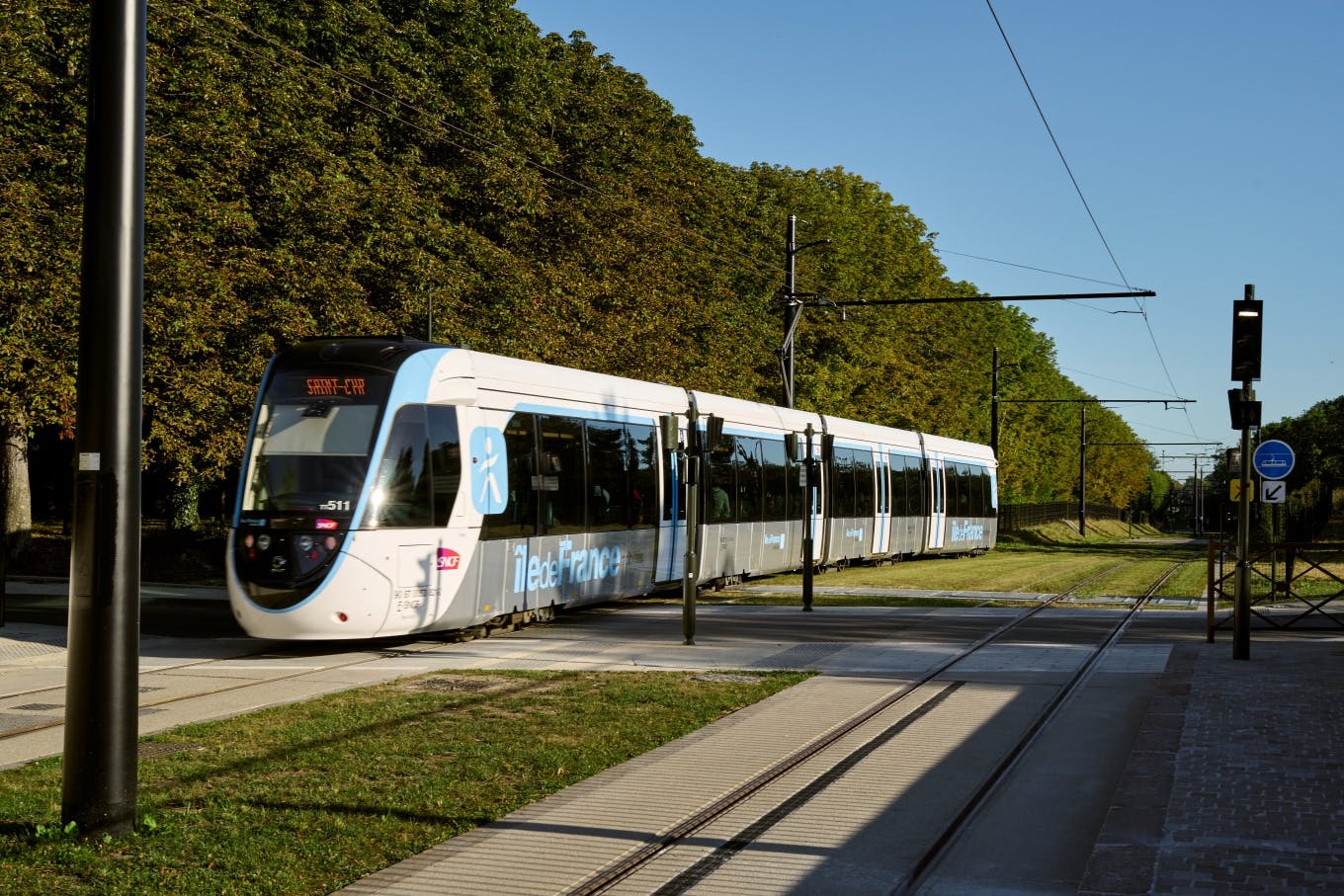
- 98% of urban tram lines (15 lines) are accessible with low-floor vehicles and on the same level as the platform
- Only the T14 tram-train line (former branch of line P) is not yet 100% accessible
- 100% of trams are equipped with visual and audible announcements,
- On the T8 tram line, a sign language information system and continuous visual information screens are installed
- The T4 and T11 lines are Cap' Handéo certified for the reception of people with intellectual, psychological, hearing and visual disabilities,
- 100% of the lines whose project was launched from 2014 (T6, T8, T9, T11, T13 and T12 at the end of 2023) will be accessible, in complete autonomy, to people with reduced mobility
Digital accessibility

Digital technology is an integral part of contemporary mobility. The efforts and investments made by Ile-de-France Mobilités are therefore also reflected in the digital level. In addition to an accessible website and a route planner that allows you to find an accessible route in real time (available on the Île-de-France Mobilités app and website), other initiatives have been put in place:
Ezymob : making it easier for visually impaired people to get around
Within its Ezymob application, Île-de-France Mobilités is experimenting with a solution designed to support visually impaired people in their travels. How does it work? The user activates the camera of his smartphone and scans his surroundings. The application locates the physical infrastructure of stations and stops (door, validator, stairs) as well as transport (vehicle door, free seat). The modes of transport concerned by the experiment are buses, trams and trains. The solution is being tested internally before a second phase of testing open to the general public.
Andilien : the free application to prepare your trip
Accès Plus Transilien, a support and information service for people with disabilities and reduced mobility, is accompanied by the free Andilien application. Available for download, this application allows you to contact a Transilien SNCF agent (by call or text) in Île-de-France stations for information or assistance, but also to prepare your trip by consulting the map of each station, its level of accessibility or the display of adapted routes.
Discover our maps and adapted plans!
Mobility accessible to all
Mobility by public transport is not just about getting around. It means creating new opportunities, discovering your region, seeing your loved ones, gaining independence or living your passions to the fullest! For all these reasons, Île-de-France Mobilités has made it its mission to allow all passengers to travel anywhere in Île-de-France, in the best possible conditions.
